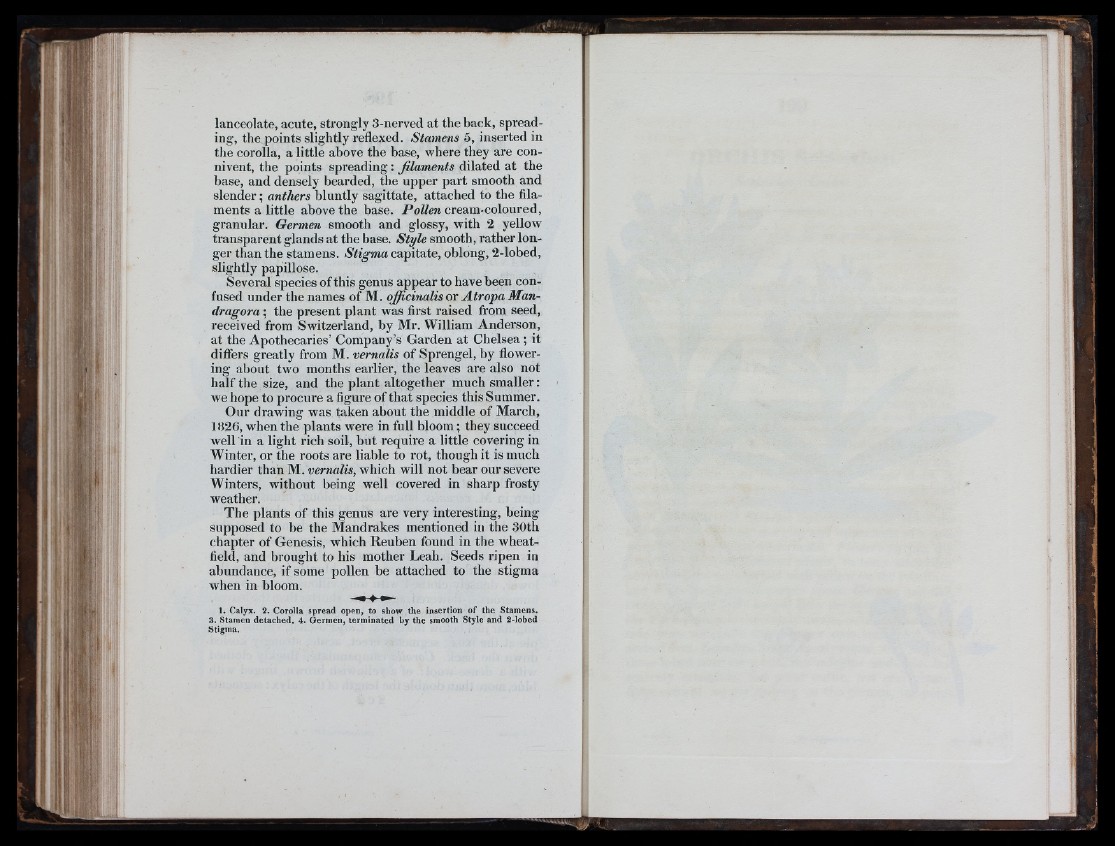
Hi
|te
'te ill
lanceolate, acute, strongly 3-nerved at the hack, spreading,
the points slightly reflexed. Stamens 5, inserted in
tlie corolla, a little ahove the hase, where they are connivent,
the points spreading: filaments dilated at the
hase, and densely hearded, the upper part smooth and
slender; anthers hluntly sagittate, attached to the filaments
a little ahove the hase. PoZ/ew cream-coloured,
granular. Germen smooth and glossy, with 2 yellow
transparent glands at the hase. Style smooth, rather longer
than the stamens. Stigma capitate, ohlong, 2-lohed,
slightly papillose.
Several species of this genus appear to have heen confused
under the names of M. officinalis or Atropa Man-
dragora; the present plant was first raised from seed,
received from Switzerland, hy Mr. William Anderson,
at the Apothecaries’ Company’s Garden at Chelsea ; it
differs greatly from M. vernalis of Sprengel, hy flowering
ahout two months earlier, the leaves are also not
half the size, and the plant altogether much smaller:
we hope to procure a figure of that species this Summer.
Our drawing was taken ahout the middle of March,
1826, when the plants were in full hloom; they succeed
well in a light rich soil, hut require a little covering in
Winter, or the roots are liable to rot, though it is much
hardier than M. vernalis, which will not bear our severe
Winters, without heing well covered in sharp frosty
weather.
The plants of this genus are very interesting, being
supposed to be the Mandrakes mentioned in the 30th
chapter of Genesis, which Reuben found in the wheat-
field, and brought to his mother Leah. Seeds ripen in
abundance, if some pollen be attached to the stigma
when in bloom.
1. Calyx. 2. Corolla spread open, to show th e insertion o f the Stamens.
.3. Stamen d etach ed . 4. G eniien, te rmin a ted by th e smooth Style and 2-lobed
Stigma.